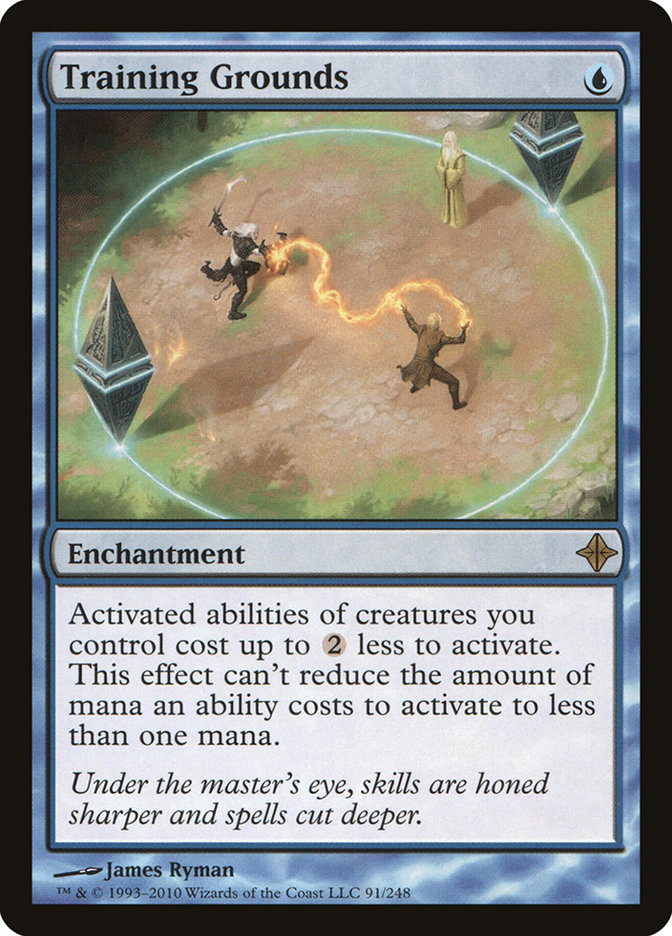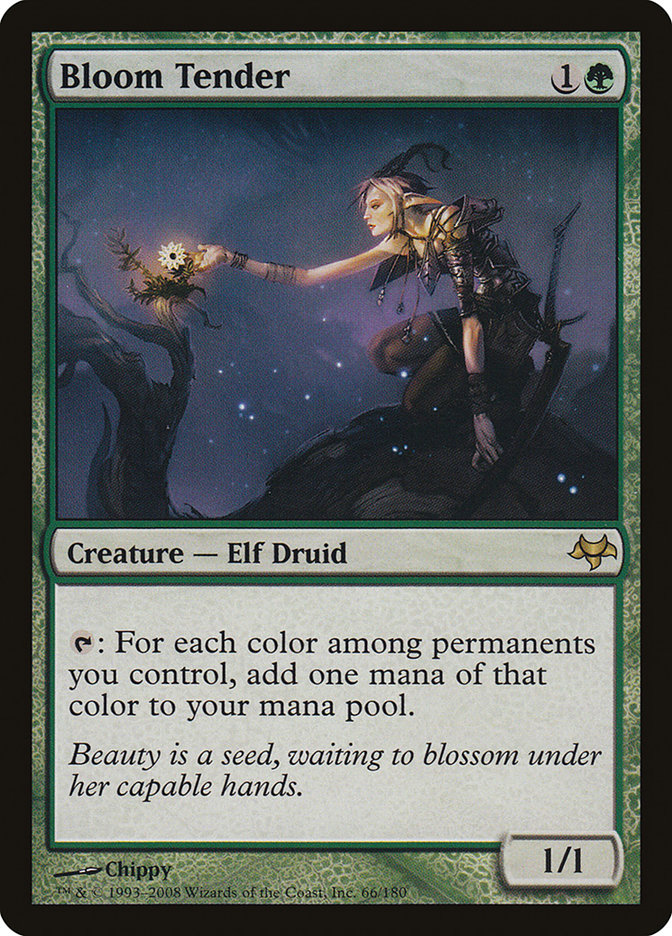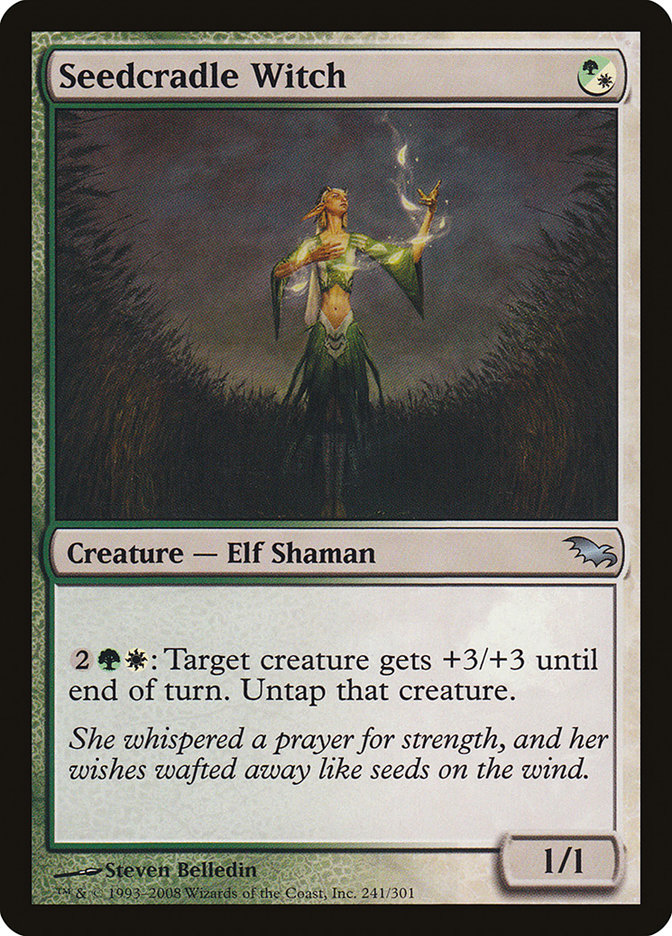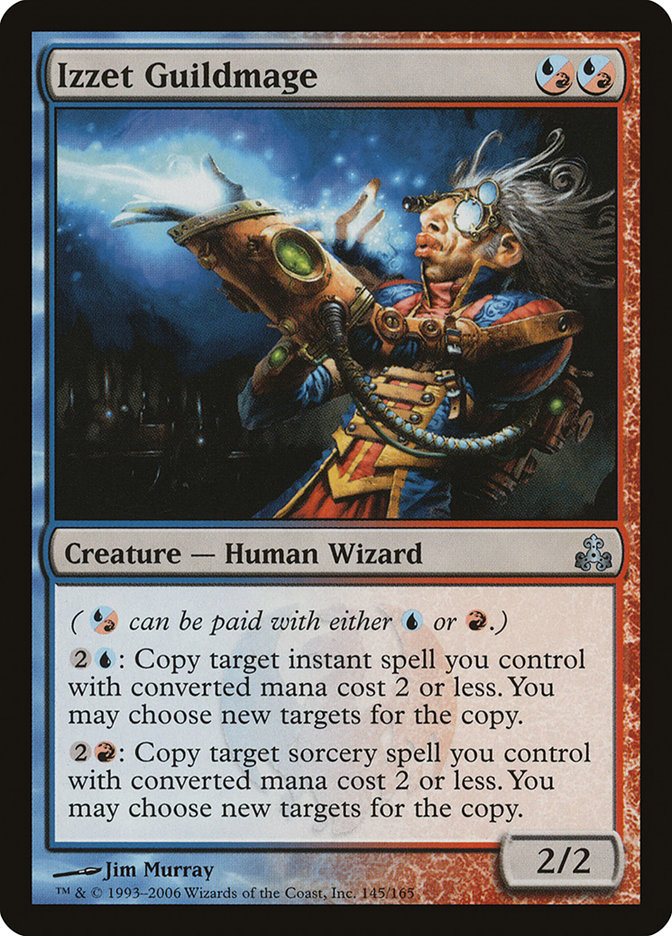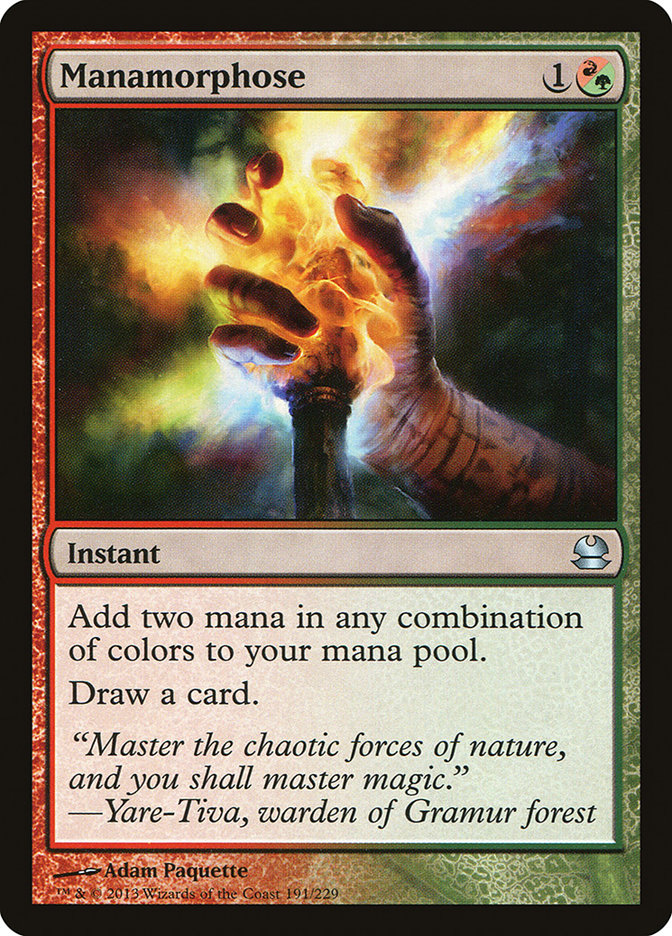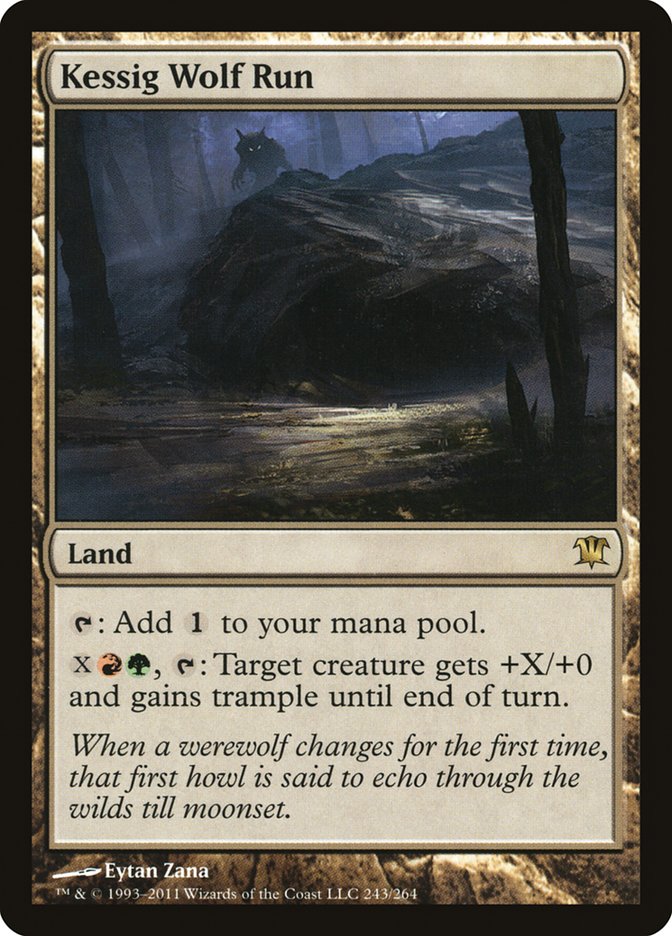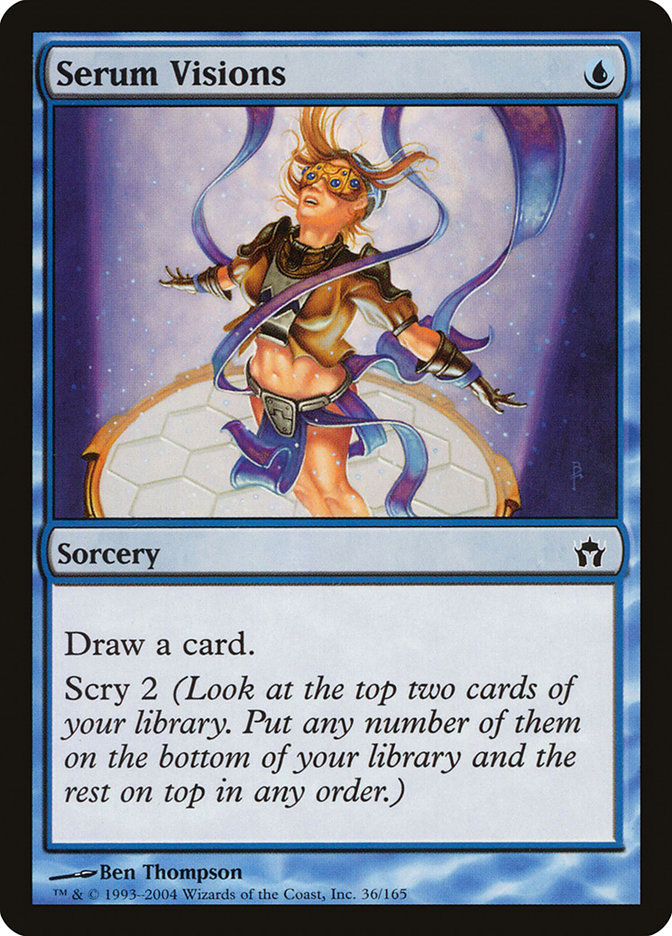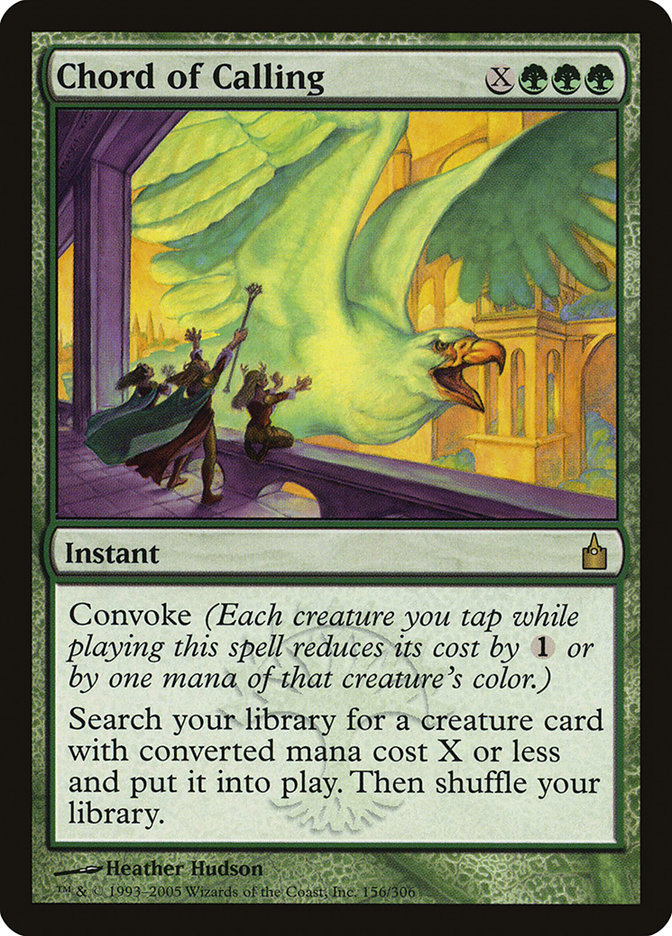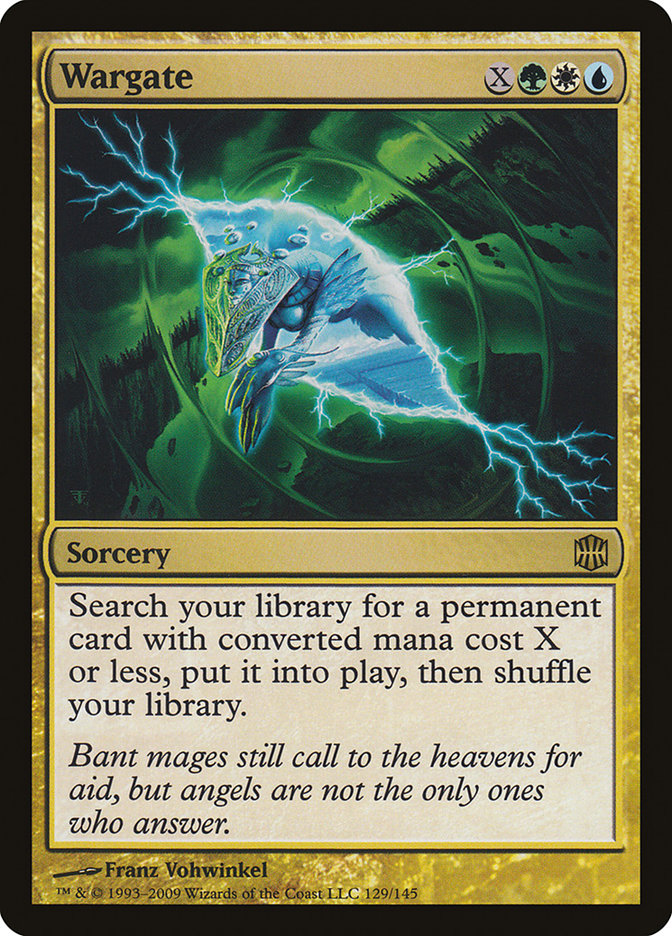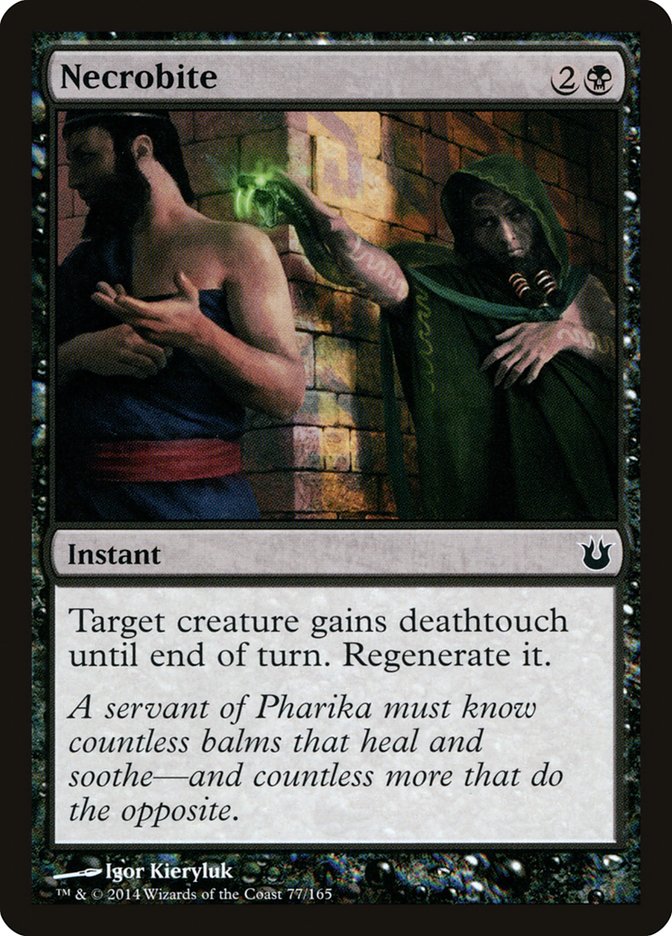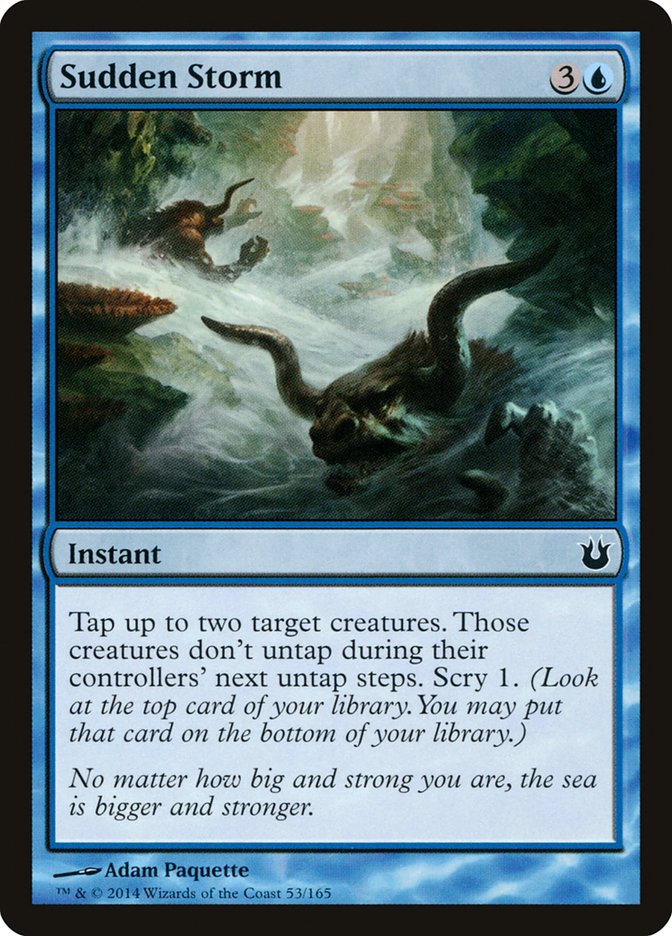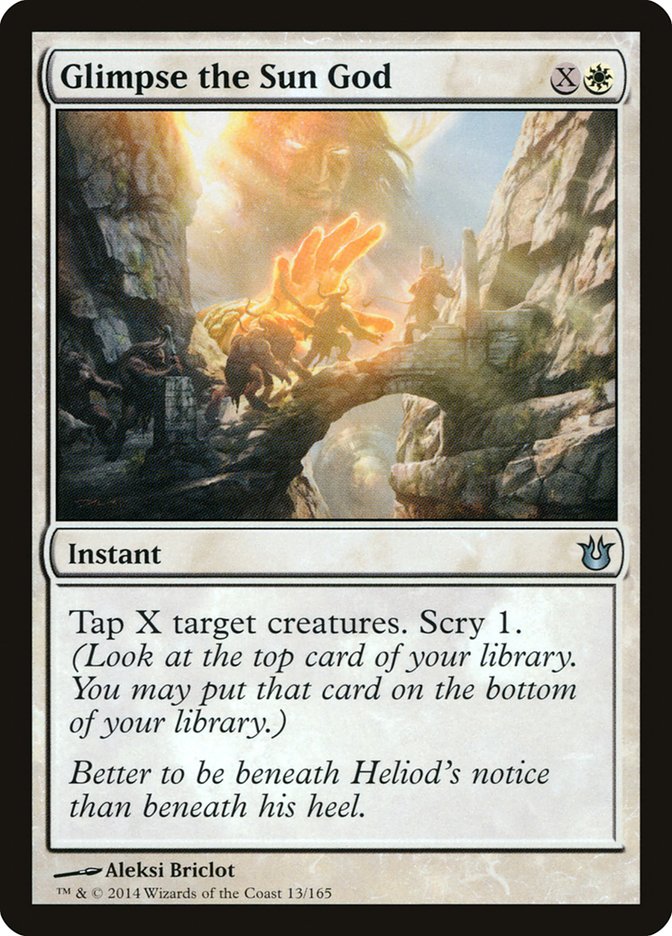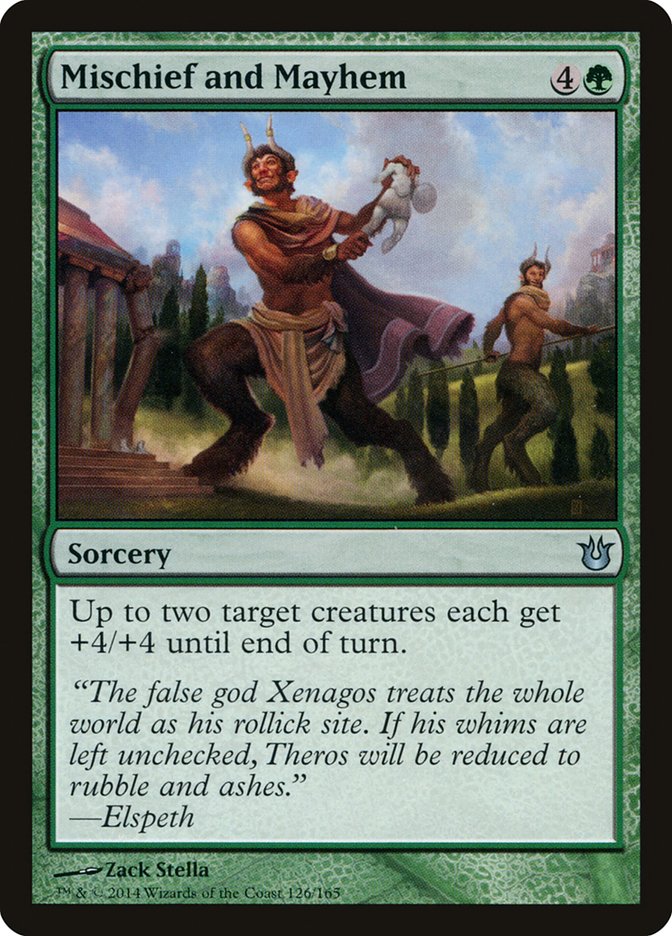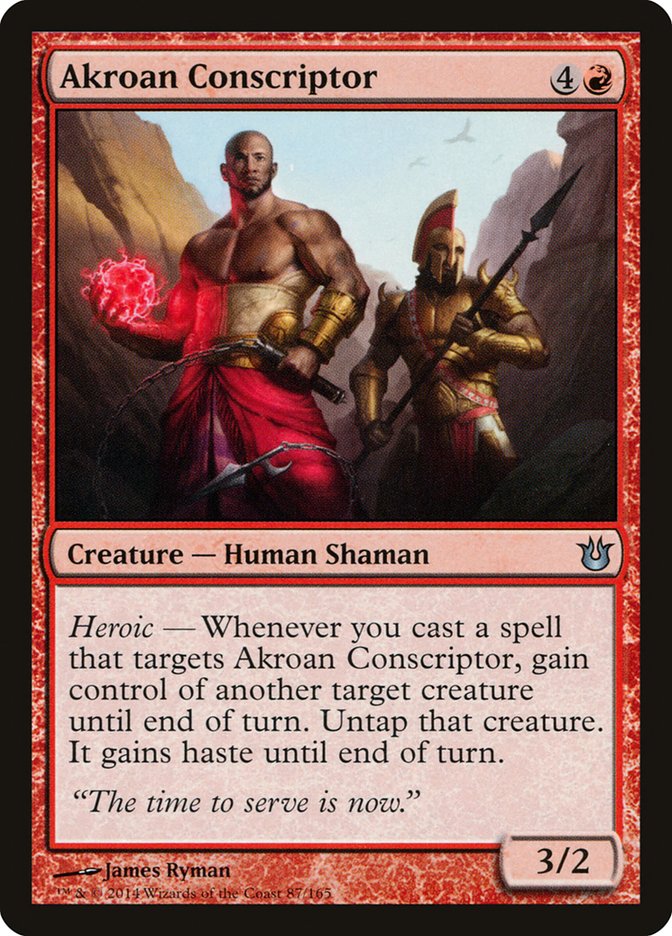This past weekend was a remarkable one for Magic. StarCityGames.com hosted what became the largest constructed Grand Prix of all time, coming in at around 4300 players! While this may have moved my record from second largest GP winner to third, I can’t say I was all that disappointed. Seeing the game grow and flourish is something we can all be proud of.
For such a large tournament, the event was run excellently, and even though I didn’t do too well in the main event, I would have been hard pressed not to have a great time. The biggest reason why would have to be the side events. I got to bust out the ol’ Shardless BUG Friday night and battle my way to winning a Force of Will and a truckload of packs. Not to mention getting to do sanctioned team drafts on Sunday, which was a real treat and something I haven’t seen offered before.
As for the main event, I decided to go with my gut and play Affinity.
Creatures (26)
- 4 Arcbound Ravager
- 4 Ornithopter
- 2 Master of Etherium
- 4 Steel Overseer
- 4 Memnite
- 4 Signal Pest
- 4 Vault Skirge
Lands (16)
Spells (18)
Sideboard

I settled on playing Ben Lundquist’s version of the deck from Pro Tour Born of the Gods card for card. The only card I considered adding was Welding Jar because of how important protecting Cranial Plating can be, but in the end it wasn’t worth the slot.
Instead of sitting here and typing out a boring Affinity tournament report, I’m just going to list my matches and a few highlights—I think it will prove the point I’m looking to prove.
Round 1-3: Byes
Round 4: Played against Soul Sisters. Won the match 1-0. When we ran out of time during game 2, my opponent was at 150 life but couldn’t kill me through Etched Champion. 4-0
Round 5: Played against G/R Tron. We split the first two games due to one of us mulliganing to five. I won game 3 on turn 3 thanks to some fast mana and a Cranial Plating on Inkmoth Nexus. Yay Affinity! 5-0
Round 6: Played against Melira Pod. Lost to Kataki, War’s Wage. 5-1
Round 7: Played against U/W/R Control. I was able to use the instant equip on Cranial Plating to maneuver around spot removal and win game 1. Game 2 I caught him off guard with Blood Moon. 6-1
Round 8: Played against U/W Control. Lost to Stony Silence. 6-2
Round 9: Played against Melira Pod. Lost to Kataki, War’s Wage. 6-3
Notice any recurring theme? I was able to win all of my matches that didn’t involve a powerful hate card like Kataki, War’s Wage or Stony Silence. Although losing to these cards was supremely frustrating, such is the risk you take when you play a deck like Affinity. Without such powerful hosers around, Affinity would be nearly unstoppable and completely dominate the format. Take it from me—if you don’t want to lose to Affinity, come prepared!
Moving forward with the deck, I want to try out Gut Shot in the sideboard. Gut Shot gives you a convenient way to snipe Kataki, War’s Wage even if they catch you when you’re tapped out. Not to mention with the prevalence of Birthing Pod decks in general, it seems like a good time to pack extra ways to gun down mana creatures.
Although I spent most of Saturday battling in the main hall, my mind was elsewhere. After every round I made the trek upstairs to the other section of the tournament to check in with my friend Elliot. If you remember from a few weeks ago, this tournament marked the debut of our ultimate Modern monstrosity masterpiece.
Without further ado:
Creatures (18)
Lands (16)
Spells (26)

This deck has a number of things going on, so I’m going to break it down one at a time.
This two-card combo is the heart and soul of the deck. Because Umbral Mantle grants its activated ability to the creature it is equipped to, it benefits from the cost reduction of Training Grounds. This means if you can get the Mantle onto a mana creature with Training Grounds in play, you can pump that creature indefinitely. The natural evasion from Birds of Paradise makes it the best candidate for the job when you are going for the kill. One of the biggest draws to playing this deck is how frequently it wins on turn 3.
Next up we have this Elven duo. With Training Grounds in play, Seedcradle Witch’s activated ability gets reduced to a modest cost of two mana. With an active Bloom Tender out, this means you can use the Witch’s ability to pump the Tender as many times as you see fit.
In general, Bloom Tender is the perfect creature to wear Umbral Mantle. With a Training Grounds in play, you can use the two cards to produce infinite mana, which can then be used with Seedcradle Witch to share the pump with any non-mana creature you have in play. Another benefit of Bloom Tender is that it can go infinite with Umbral Mantle even if you don’t have a Training Grounds in play; all you need is two other differently colored permanents.
Enter Izzet Guildmage.
Izzet Guildmage serves two purposes in this deck. First off, it provides a blue and red permanent that can either be cast off of only blue mana or grabbed via Chord of Calling. This makes it the ideal creature to pair with Bloom Tender and Umbral Mantle to go infinite without Training Grounds. Secondly, this whacky wizard possesses a combo all of his own.
With Training Grounds in play, Izzet Guildmage’s first ability gets reduced to the cost of a single blue. With Manamorphose on the stack, you can pay one blue to activate the Guildmage and make a copy of it. You let the copy resolve, adding two mana to your pool (at least one blue) and drawing a card in the process. Since the original spell is still on the stack, you can use the mana you just generated to repeat the process as many times as you’d like, netting a mana and a card each time. Winning from this position is usually trivial.
Kessig Wolf Run serves as the perfect utility land for this deck. It gives you a way to push your ground creatures through the red zone as well as a way to make use of the infinite mana you can generate. As an added bonus, it’s one of the only ways the deck has to win games when it can’t get any of its combos off the ground.
Finally, we have the three cards that tie the deck together. Serum Visions provides a way to dig through your deck and find the cards you need. Chord of Calling can be used to grab a mana creature when you need it—Spellskite when you’re looking to be tricky—and also lets you play a lower count of your more narrow creatures like Izzet Guildmage and Seedcradle Witch. Although Wargate might seem like a slower and clunkier version of Chord of Calling, its spot in the deck is well earned. The versatility of being able to find any creature, Training Grounds, Umbral Mantle, or even Kessig Wolf Run is invaluable.
In Grand Prix Richmond Elliot ended up going 5-3 (with zero byes) with this deck. While this record didn’t get him to day 2, he had an absolute blast playing the deck. He told me hilarious stories of his opponents being completely blindsided by all the ways he could combo off and completely destroying their decks by sideboarding incorrectly. The advantage of playing a rogue deck is far from negligible.
Unfortunately there is one glaring flaw with this deck. If you decide to play this deck, you’re committing to playing a combo deck. Usually the biggest advantage to playing a combo deck is that it doesn’t allow your opponent to interact with you. Think about Storm. Your opponent’s removal is going to look pretty silly when they’re staring down cards like Past in Flames and Grapeshot. With the Umbral Mantle deck, you’re relying on creatures to combo out and win the game. This means all of the cards that would otherwise be useless against combo decks are great against you.
At this point you might be asking yourself, “But wait, isn’t Melira Pod a creature-based combo deck? That’s one of the best decks in the format.” The thing about Melira Pod is that it isn’t reliant on its combo to win the game. Melira Pod plays out much more like a midrange creature deck that just so happens to have a built-in combo that can win the game out of nowhere. With this build of the Umbral Mantle deck, you’re all in on the combo. If you can’t assemble one of the combos, you probably only have a five or ten percent chance to win the game. We were hoping the raw speed of the deck would be enough to counteract this weakness, but that just wasn’t the case. I’m confident this deck can be tuned and refined to help mitigate or change this, but it requires a complete overhaul.
As one Grand Prix comes to a close, there’s another one right around the corner. While Montreal isn’t poised to break any records, it just so happens to be the best format ever. I’m talking of course about Limited! I’d like to close things out by identifying the common or uncommon of each color from Born of the Gods that has overperformed the most for me since the set’s release. I feel like this set more than most has cards that seem downright awful at first that turn out to be role players.
At first Necrobite looked like a throwaway card to me. I figured it would sometimes sneak in as a 23rd card but never much more than that. Three mana felt too restrictive for a combat trick. The real trick to this card is to look at is as a removal spell. If you can block a creature, you can kill it with Necrobite. The fact that it doubles as a “counterspell” to removal and can lead to some blowouts if your opponent ever tries to double block pushes this card over the top.
Sudden Storm is another card that really caught me off guard with how good it is. Frost Breath was marginal at best in M14 Limited, and I didn’t think adding a mana to the casting cost would do much for the spell. The trick with Sudden Storm comes down to context. Born of the Gods is situated a lot more around close damage race situations than M14 was. Not to mention in that M14, the top end of creatures you were tapping was somewhere around a vanilla 4/4. In Born of the Gods Limited, you might be holding a 10/10 flying, lifelink, trample creature off for two turns.
Remember how good Gridlock was in Gatecrash Limited? Yeah, me neither. Just like with Sudden Storm, this one comes down to context. Denying your opponent a combat while also faltering their blockers can be absolutely devastating in this format. It also helps that the effect comes in white this time around, a color with a few more ground creatures than blue.
As a sorcery, I thought that this ridiculous pump spell would be good for a few laughs and not much else. While it still isn’t a perfect fit for every deck, it performs very well in U/G and G/W decks. On top of having fliers to get full value off of Mischief and Mayhem, blue has Wavecrash Triton, and white has Elite Skirmisher. These two heroes make chump blocking the massive damage output from Mischief and Mayhem no easy task.
Red is the color with the most obvious good and bad cards. That being said, Akroan Conscriptor doesn’t quite get the respect it deserves. While most people think the card is very good, it is in fact unbeatable. If I ever let my opponent untap with one of these in play and a few cards in hand, I assume I’ve lost the game. Paying mana and a card for one Threaten effect is reasonable. Getting multiple Threaten effects incidentally is insane.
That’s all I’ve got for this week. I’m really excited for Grand Prix Montreal, and I hope to see some of you guys there!

